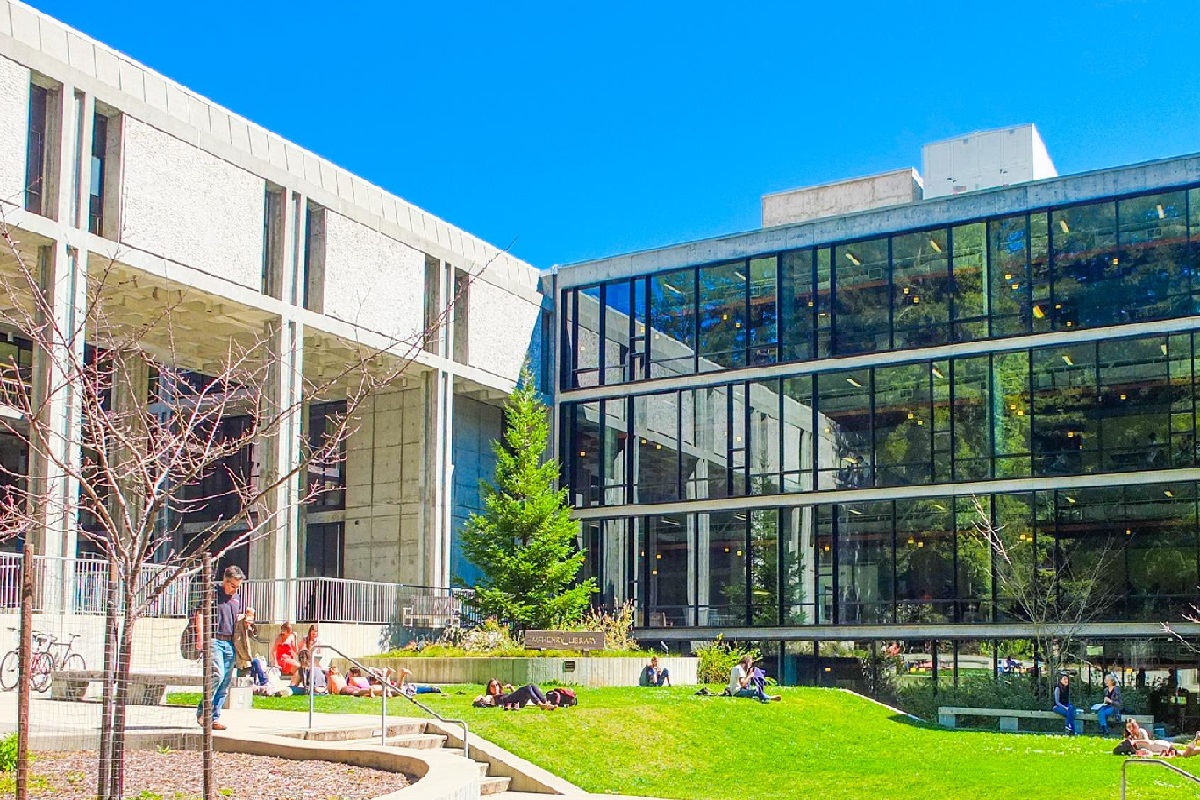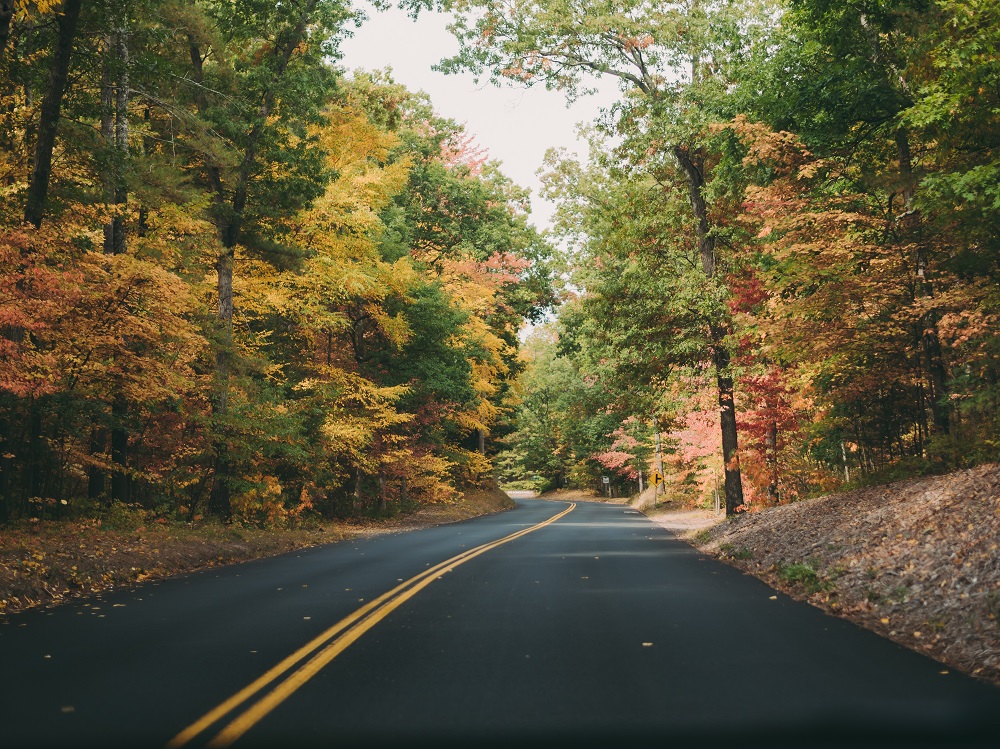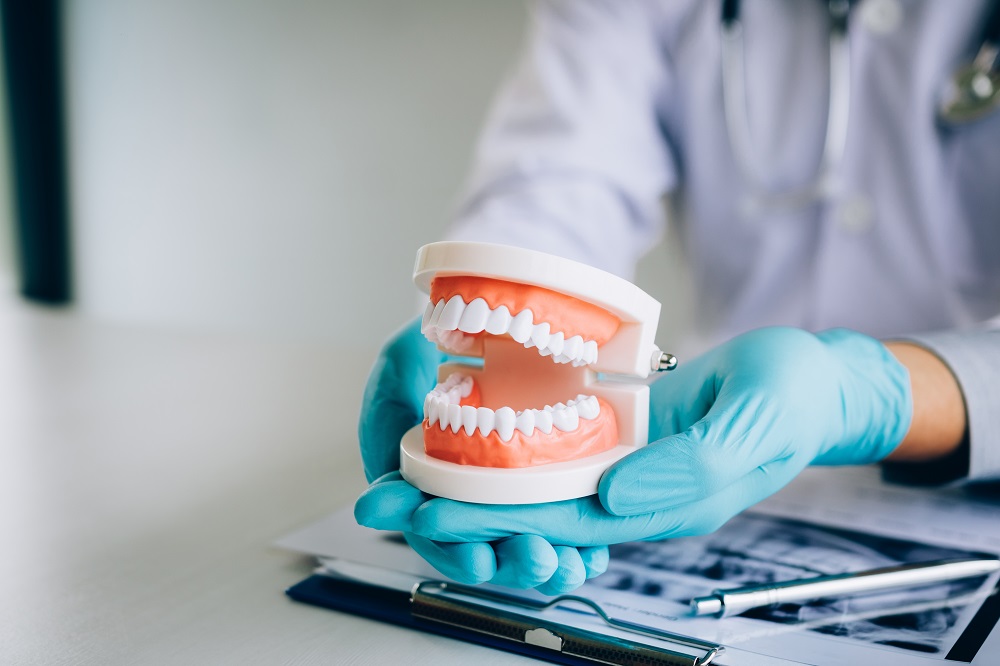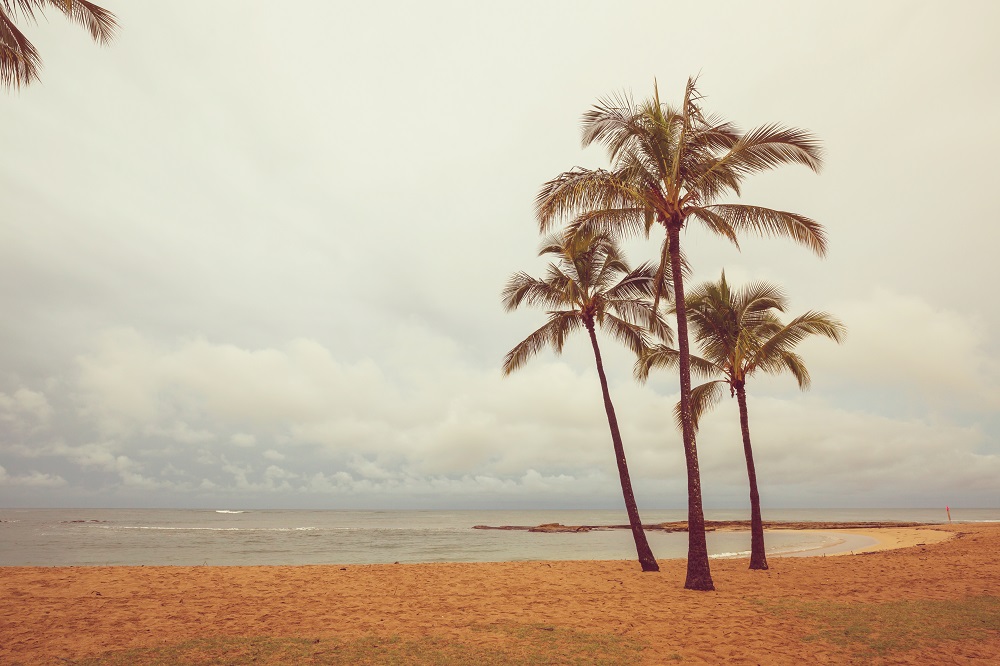The universities and colleges are known as (or notorious) hotspots for political debate. Students may prefer to steer away from the drama of politics and prefer an uninvolved, academic environment. Others find that politics are just a fraction (if it’s not the entire) of the enjoyment. The college environment gives students the chance to participate in, learn about and explore the subject in a lively and vibrant atmosphere. Through publications, team debates, or minority student groups, they are the ones for whom politics are central to their identities. Thus, the political structure of a college is possibly its most significant characteristic. We’ve compiled an inventory of the top 20 most political schools in the USA.
The Most Political Universities
1. Evergreen State College
Evergreen State College tops the list, with 96 percent of its students politically associated. In total, 67% of students describe the college as liberal to progressive, 27% of the rate that it is generally liberal. Evergreen believes in inclusivity and tolerance as well as the LGBT community has an active presence. Another reason for pride is the school’s outstanding (and name-implied) green credentials. “Omnia Extras,” the school’s motto, perfectly reflects the general policy: “Let it all hang out .” The school’s organic farm, 35,000 square feet, is home to many crops and chickens. The produce from the farm is used to provide food for campus services and is sold for sale to the Evergreen community via CSA shares. One thousand acres of forest and the unspoiled Evergreen beach give various opportunities for research on environmental sustainability. A few student-run political clubs include The Evergreen Socialist Alternative, Abolish Cops and Prisons, Evergreen Young Americans for Liberty, etc.
2. Reed College
Reed College is famously one of the most political campuses in the United States. In the 1950s McCarthyite period, a notable Marxist professor was dismissed due to not cooperating with the House Un-American Activities Committee (HUAC) investigation. Other significant events that the school has had in its history include the school’s founder’s violent opposing U.S. participation in World War I, early feminist initiatives, and the invitation of an official from the Socialist Party of America to address the students on The Russian Revolution. Ninety-one percent of the students are politically affiliated, and overall, the campus is divided between moderate liberals and extreme liberals. It is also home to the LGBT group represented by Q.A. (Queer Alliance), and LGBT students have reported friendly, inclusive, and welcoming students. The campus is home to other student groups and political groups. However, the majority of them are informal, except for collaborations which are also with Oxfam as well as Planned Parenthood. Maybe all you have to be aware of is the school’s non-official self-aware slogan: “Communism, Atheism, Lovespan, and Free Love .”>
3. The United States Air Force Academy
As the only primarily conservatism school listed, 91 percent of Air Force students – correctly classified as cadets – are politically associated. The school’s cadets and faculty members are mostly Christian, but Air Force welcomes cadets of all faiths and creeds and has recently created additional worship areas for different religions. Since it is a taxpayer-supported institution, the students are from various economic backgrounds. Additionally, the international program attracts students from all over the globe. To be admitted, applicants must undergo a rigorous screening process and be able to satisfy the school’s highly excellent academic, physical, and moral standards. Candidates must also be nominated in writing by the U.S. Representative or Senator. U.S. Representative. Senator or U.S. Representative. Cadet Honor Code is among the Air Force’s oldest traditions. In the code, cadets are considered “guardians and Stewards”: “We will not lie or steal or tolerate anyone who violates this code. Additionally, I vow to fulfill my obligation and live a life of honor. .”
4. Grinnell College
The Grinnell College student body is reported as having 91% politically affiliated, mainly on the right, with students ranging from radical and moderate liberals to revolutionary anarchists. However, right-wing students exist, and they can attract prominent speakers from their Young Republicans. Political Science is among the most sought-after undergraduate majors, psychology, Economics, Biology, History, and English. It is also a popular choice for students with disabilities. The LGBT community is well supported on campus; The Stonewall Resource Center is home to various library materials relevant to LGBT issues. Other student-run organizations and activist groups are plentiful, with the most distinct Student Government Association, which offers students the chance to manage a budget of $360,000 each year. Grinnell students are mainly focused on serving. They have an Alternative Break program that allows students to participate in service projects during the holidays. As an advanced postgraduate program, Grinnell Corps travels around the globe to work on projects. Grinnell has the highest number of alumni per head within the Peace Corps than any other college in the United States.
5. University of California Santa Cruz
It is believed that the University of California – Santa Cruz is a thriving political climate on campus, where 94% of the students identify as being politically involved. While the area was filled with conservatives in the 50s, during the 1960s, the rise of anti-war and student activism groups turned the tide in a direction that was firmly left, which is where it is today. Economic and racial diversity are crucial elements of the school’s culture. In addition, students from the LGBT community are welcomed and active. It also has a brand new generation of minorities for students. They are very much in tune with SoCal society in general; Santa Cruz is known as a place of “cannabis culture” and, perhaps in a fitting way, it is also the home of the highly acclaimed and huge Grateful Dead archives, which are now open to visitors in. Additionally, the emphasis on environmental sustainability is worth noting, including over 30 7.
6. Mount Holyoke College
Mount Holyoke College has 90 percent of its students being politically associated. In general, most students identify as liberal or very liberal, but there is a conservative and vocal community that exists. Students report frequent protests organized by the campus structures for political reasons and demonstrations of solidarity over matters arising from international conflicts and labor rights. Mainly students are part of the Student Coalition for Action, an incredibly engaged and enthusiastic group. It is also a popular group for the LGBT community and is very well received. The Jeannette Marks home, operated through The True Colors organization, is the designated safe space for the community and is accessible to all. There are various minority organizations accessible: AASIA (Asian American Sisters in Action), MHACASA (Mount Holyoke African and Caribbean Student Association), and many others, including as students make their voices heard on the political scene and encourage the campus community to vote. The student body at Carleton College is reported as having a high percentage of 88 percent politically associated, mainly with the left. Its Carleton Student Association recently decided to terminate a school’s agreement with Coca-Cola due to concerns about politics. Alongside the standard political organizations such as College Democrats and College Republicans, Carleton also has several minorities-focused clubs on campus. Some of them are American Native People’s Organization, Coalition of Hmong Students, Men of Color, and Asian Students in America.
Furthermore, the LGBT community, as well as general tolerance on campus, is very much appreciated. On-campus organizations are Out After Carleton, Coming Out Support Group, CIAO, and SAGA. Some notable political or politically-affiliated alumni include former U.S. Supreme Court Justice Pierce Butler, former U.S. Secretary of Defense Melvin R. Laird, former Meet the Press host Garrick Utley, former editor-in-chief of Politico John F. Harris, and American journalist and television personality Jonathan Capehart.
7. Oberlin College
Oberlin College has a long tradition of political activism, as 93% of the students report being politically involved. The college first admitted African American students in 1833 with the help of George B. Vashon, who was the first faculty member of Howard University and the first black lawyer admitted to the Bar in the state of New York. In addition, Oberlin admitted its first women – four in 1837. Oberlin was also an integral part of the Underground Railroad campaign due to its steadfastly anti-abolitionist president. In the present, progressive politics are the norm. Demonstrations and protests have become an everyday occurrence and are intimately associated with the campus. The LGBT community is accepted by everyone as is one of the most popular events is Drag Ball. Furthermore, Oberlin makes a concerted effort to keep sustainability issues and projects on top of the list and intends to be carbon neutral by 2025.
8. Swarthmore College
Swarthmore is home to eighty percent of the students declaring themselves politically affiliated and has always been a pillar of liberal political thought. Many of its founding members were prominent leaders in the abolitionist and feminist movements of the 19th century. Perhaps the most revealing sign of the school’s passion for politics is that the Swarthmore Mock Trial program has been widely acclaimed as being among the best in the country and attracting many participants. In addition, the Amos J. Peaslee Debate Society is also involved and powerful. Diversity is the main focus of the college, and students are from more than 60 countries and 50 states. It is a place where the LGBT community is well-supported and is accepted throughout campus. The school also includes an organization called the SQU (Swarthmore queer union). Each year the SQU hosts two Pride Weeks with a coming-out week and a symposium. There are a variety of groups that cater to minorities, such as SASS (Swarthmore African American Society), Enlace (a Latino group) as well as SOCA (a group of students of Caribbean origin). It’s important to note that the proximity of Swarthmore to Philadelphia allows students to take part in local political campaigns and politics on a larger scale.
9. Smith College
Smith College has 89% of its students identifying as politically affiliated close to entirely to the left, with moderate to highly liberal students reporting. Sexuality and LGBT concerns are the primary issues that are affecting the campus. Students on campus recently voted on whether or not to remove”she,” the gender-neutral pronoun, from its usage of “she” not to exclude students who don’t consider themselves female. It is important to note that the LGBT community is very well represented and well-heard on campus and constitutes a substantial part of the student body. The campus has a myriad of minority groups: Asian Students Association, Black Students Alliance, Indigenous Smith Students and Allies, International Students Organization, KASS (Korean-American Students of Smith), Nosotras (Latina organization), Prism (Queer Students of Color), SACSA (Smith African and Caribbean Students Association) and many more. Smith Democrats Smith Democrats were named the best chapter in the country in recent years. A few notable politically connected alumni are Nancy Reagan, Gloria Steinem, Yolanda King, United States Senator Tammy Baldwin, Piper Kerman, etc.
10. University of Vermont
The University of Vermont, like the state, is vocal on its political left. 85percent of the students are politically influenced, with over 100 student clubs and groups involved in social and political activism. Environmental consciousness is a primary aspect of UVM, and the school is widely recognized as one of the greenest universities in the nation. Its Dudley H. Davis Center is the first student center to earn U.S. Green Building Council LEED Gold certification. The climate action plans have developed similarly ambitious 100 percent carbon-neutral electricity and 100% carbon-neutral heating cooling, fleet, and heating by 2020 and zero net emissions by 2025. The Lawrence Debate Union is another prominent factor on campus and competitor in American Policy Debate and British Parliamentary debate formats. Alumni politically affiliated include Consuelo Northrup-Bailey, Grace Coolidge, Lieutenant Governor Brian Dubie, former Governor Madeleine Kunin, etc.
11. Columbia College Chicago
Columbia College Chicago has a student body that is 89% politically connected. The majority of students are classified as liberal to moderately liberal. However, CCC is also one of the largest and most diverse student populations on the list, having the campus represented by all 51 states and 41 nations. It’s also very symbolic of Chicago and has campuses scattered across the city. It is a place where the LGBT community is well represented and well-supported. It is a great place to be. Student Government Association of Columbia College Chicago offers students the chance to be active on the campus in all its aspects comprised of one Executive Board and Senate and committees. Meetings are open to the public every Tuesday to ensure that students are up-to-date. There are some campus organizations that are politically affiliated. Are those of the Asian Student Organization, Students Supporting Israel, Hillel, the International Student Organization, the Columbia College Association of Black Journalists (CCABJ), Hispanic Journalists of Columbia (HJC), and Common Ground.
12. Bard College
Bard College is famous for its unique and unconventional academics, and its political scene is no exception. With 93% percent of students identifying themselves as politically affiliated, The campus is entirely left-of-center, and many of them are at the end of the spectrum. Like most schools, history may account for a large portion of the school’s political influence. The governor at the time, New York Franklin D. Roosevelt, was instrumental in rescuing the school from being insolvent through the Great Depression. Bard was a refuge for intellectuals emigrating to Europe throughout World War II. Students are regularly engaged in political activities, including migrant workers, U.S. hegemony, and civil rights. They sometimes organize trips to participate in notable protests across the nation (often within the confines of NYC). The other minority groups of students comprise Asian American Students Organization, Black Students Organization, Christian Students Fellowship, International Students Organization, Jewish Students Organization, Latin American Students Organization, and The Muslim Students Organization.
13. Humboldt State University
The Humboldt State university student body has 91 percent of them political. The majority of the students lean towards the left or the far left. However, the campus is relatively diverse, with conservatives and moderates able to be seen. It is a place where the LGBT community is welcomed and embraced on campus without hesitation. The school’s founder – famous naturalist and explorer Alexander von Humboldt – would undoubtedly be happy with the school’s commitment to environmental issues. Its Humboldt Energy Independence Fund (HEIF) uses fees from students to fund the use of renewable energy and energy-efficient initiatives across the campus. Faculty members, students, and staff are all conscious of how they help create an environmentally sustainable campus, intending to work towards energy independence. Furthermore, the students are also involved in their Waste Reduction and Resource Awareness Program (WRRAP), which strives to create HSU as a zero-waste university. HSU has been listed in the Princeton Review due to its environmental consciousness, students’ overall political involvement, and social involvement.
14. Vassar College
Vassar College’s student body has 85% of its political affil8African American, Latino as well as Asian/Asian as well as Native American students. Several student-run political organizations, including those of the Vassar College Democrats, The Vassar Conservative Libertarian Union, and Vassar Greens. Vassar Greens. The Vassar Chronicle is the school’s journal of politics that lets students participate in the current political debates with the publication of op-eds and longer-form columns. Furthermore, Vassar students don’t just pose as politicos, and they know what they are talking about. Political Science is among the most sought-after majors at Vassar College and as English, Psychology, Economics, and Biology.
15. Wesleyan University
Wesleyan University‘s student body boasts 87% of its political affiliation, the majority of them to the left, but moderates are also present. This shouldn’t be a surprise: Wesleyan has been proud of its progressive ideology throughout its time. In 1872, it was among the very first universities to try coeducation with female and male students. Social activism has become an integral part of the campus as well as U.S. News & World Report classified the university to be one of the “20 Colleges that are the easiest to be a part of.” There are two organizations that students can participate in. Debate Society and Environmental Organizers (EON) (EON) are two popular organizations where students can express their political beliefs. Hermes is a progressive student-run paper and a well-known and respected institution. The alumni with political affiliations include the former Colorado Governor John Hickenlooper, former Vermont Governor Peter Shumlin, and more.
16. SUNY Purchase College
SUNY Purchase College has a student body that is 83% politically affiliated. Students tend to lean towards liberal and gradually become liberal. However, right-wing students are present on the campus and can express their opinions. There is plenty of room for the LGBT community to be well-represented and well-supported on campus. Many other minority student groups, including Latinos Unidos, OAPIA (Organization of African-American People across America), Hillel, and SOCA (Student Organization of Caribbean Ancestry). On-campus, there are two notable political organizations. The NYPIRG (New York Public Interest Research Group) provides an internship on campus and connects students with campaigns for political office. The PUSH program: Ideas Into Action runs local and international activism events and discussions. The purchase has an extensive list of notable alumni associated with political parties.
17. San Francisco State University
Students at San Francisco State University boast that 88% of its members are political, with the majority predominantly left-leaning. Student protests in the 1960s were a significant factor and continue to influence the university’s political composition. The groups like the Black Students Union, Third World Liberation Front, and Students for a Democratic Society (SDS) frequently protested, notably over the Vietnam War, and held marches, sit-ins, rallies, and even teaching-ins. The year 1968 saw students start what would be the longest strike by students in the university’s history, culminating in the creation of the university’s Ethnic Studies program (the strike was not over till 1969). In keeping with the tradition of protests for social justice, numerous notable protests have taken place in the current time, including those for protests against the Iraq War and between Pro-Palestine and Pro-Israel groups. Strong support for the LGBT community is well-supported on campus and recognized by PRIDE and the PRIDE at S.F. State Committee and Queer Alliance. The alumni of SFSU who are politically affiliated are, as you can expect, large in numbers and include representatives, senators, journalists, mayors, judges, activists, and many more.
18. University of California – Berkeley
The image of the progressive political culture in academia The Cal Berkeley student body has been reported as 82% political-affiliated. Before it was the focal point for Vietnam demonstrations and SDS protests throughout the 1960s, Berkeley student protests were held for World War II. (Even when the faculty member J. Robert Oppenheimer was appointed to lead the Manhattan Project to build an Atomic bomb.) It’s not surprising that the McCarthy period of the 1950s brought about a variety of controversies and protests and saw many faculty members being dismissed for refusing to work. While it’s still known as a place for those on the right, Berkeley has evolved over the years and is now home to an open-minded College Republicans group that has ignited the debate over politics on the campus. In addition, the LGBT community is well-supported and has access to a variety of safe spaces, including Unity House, the Queer Resource Center, and Unity House. The totality of Berkeley has more than 100 student-run activism organizations and groups, which include MEChXA de UC Berkeley, Berkeley American Civil Liberties Union, Berkeley Students for Life, Campus Greens, The Sustainability Team (STEAM), the Berkeley Student Food Collective, Students for Sensible Drug Policy as well as Cal Berkeley Democrats.
19. Macalester College
Students at Macalester’s college have 91 percent political affiliation. With a particular commitment to international unity, Macalester has made a conscious effort to encourage diversity and internationalism throughout its history. (It still has the United Nations flag directly below the flag of the United States.) In the 1940s and the 1950s, Macalester was among the very first universities in the United States to admit and recruit students from worldwide and welcome international faculty. Students today come from every state and a staggering 87 countries across the globe, creating an extraordinarily diverse and inclusive atmosphere. Although Macalester tends to be on the left, students are encouraged to participate in the lively discussion on campus regardless of political affiliation. Students also manage groups for political debate, newspapers, magazines, mock trials, and many more. Both College Democrats and Republicans make their presence known on campus and in numerous other particular interest and minorities groups. It is a place where the LBT community is well-loved and well represented; most importantly, students are convinced of the importance of engaging in civic activities regardless of creed or race. Background.
.




Comments are closed.